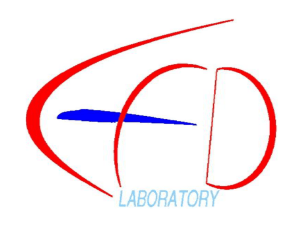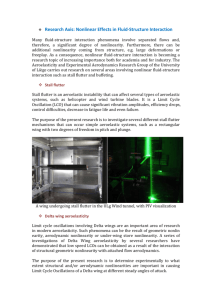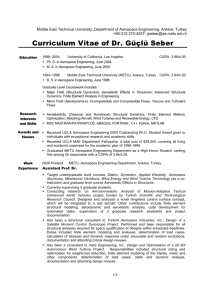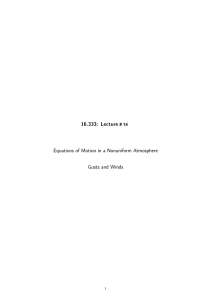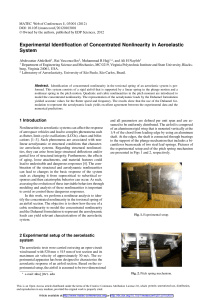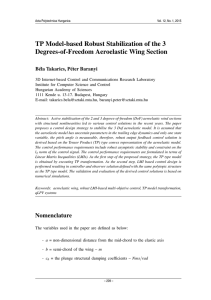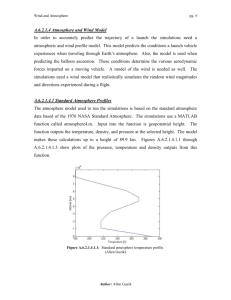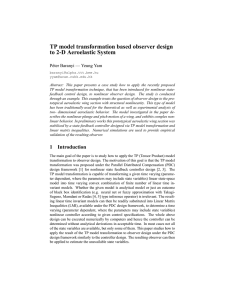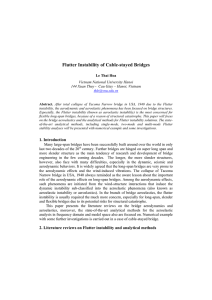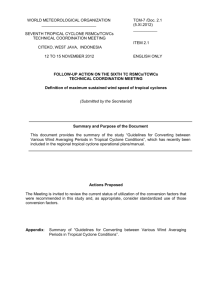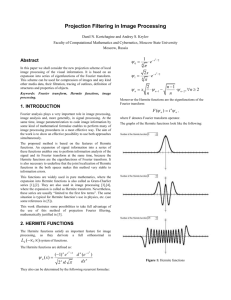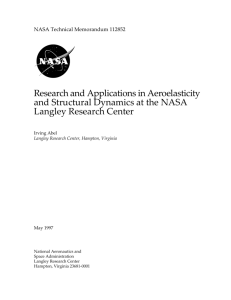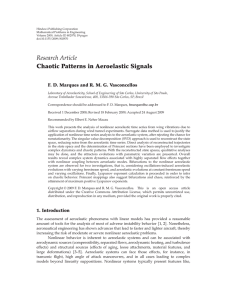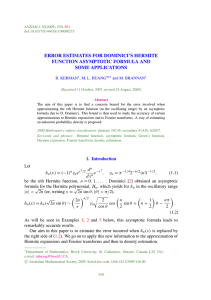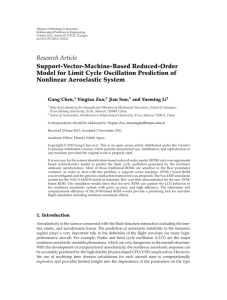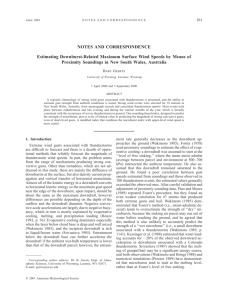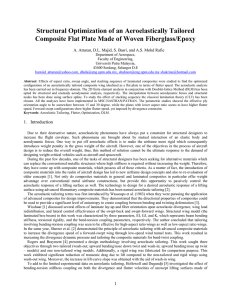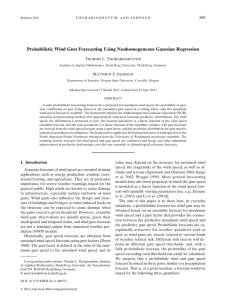Basic probabilistic methods for linear systems have been employed
advertisement
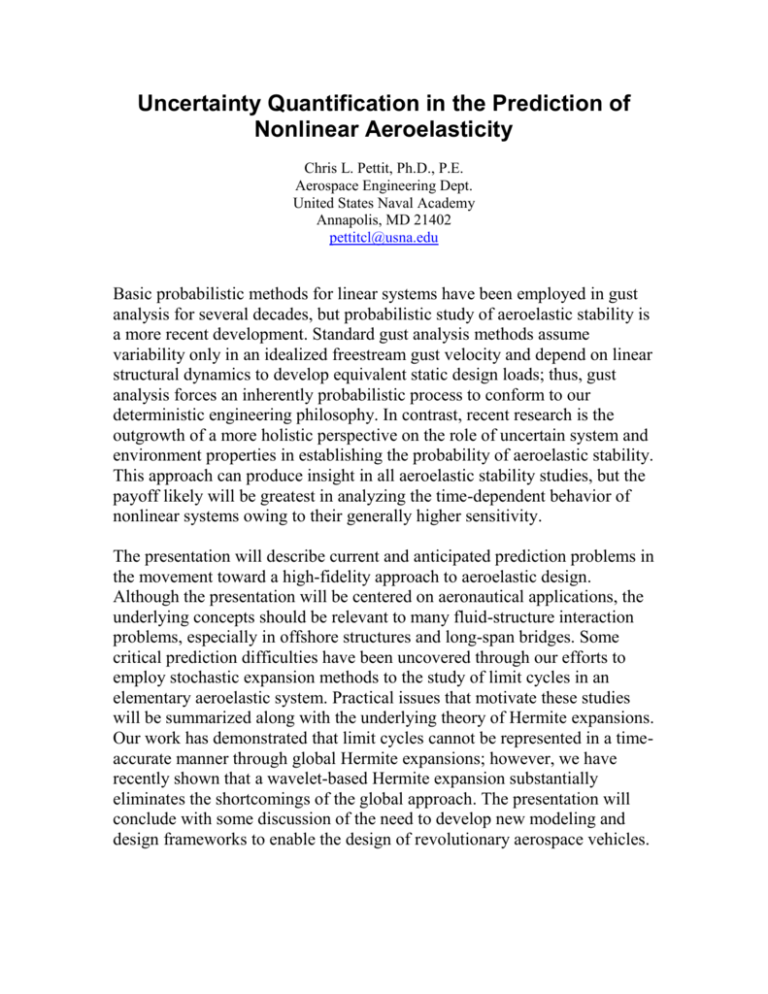
Uncertainty Quantification in the Prediction of Nonlinear Aeroelasticity Chris L. Pettit, Ph.D., P.E. Aerospace Engineering Dept. United States Naval Academy Annapolis, MD 21402 pettitcl@usna.edu Basic probabilistic methods for linear systems have been employed in gust analysis for several decades, but probabilistic study of aeroelastic stability is a more recent development. Standard gust analysis methods assume variability only in an idealized freestream gust velocity and depend on linear structural dynamics to develop equivalent static design loads; thus, gust analysis forces an inherently probabilistic process to conform to our deterministic engineering philosophy. In contrast, recent research is the outgrowth of a more holistic perspective on the role of uncertain system and environment properties in establishing the probability of aeroelastic stability. This approach can produce insight in all aeroelastic stability studies, but the payoff likely will be greatest in analyzing the time-dependent behavior of nonlinear systems owing to their generally higher sensitivity. The presentation will describe current and anticipated prediction problems in the movement toward a high-fidelity approach to aeroelastic design. Although the presentation will be centered on aeronautical applications, the underlying concepts should be relevant to many fluid-structure interaction problems, especially in offshore structures and long-span bridges. Some critical prediction difficulties have been uncovered through our efforts to employ stochastic expansion methods to the study of limit cycles in an elementary aeroelastic system. Practical issues that motivate these studies will be summarized along with the underlying theory of Hermite expansions. Our work has demonstrated that limit cycles cannot be represented in a timeaccurate manner through global Hermite expansions; however, we have recently shown that a wavelet-based Hermite expansion substantially eliminates the shortcomings of the global approach. The presentation will conclude with some discussion of the need to develop new modeling and design frameworks to enable the design of revolutionary aerospace vehicles.
